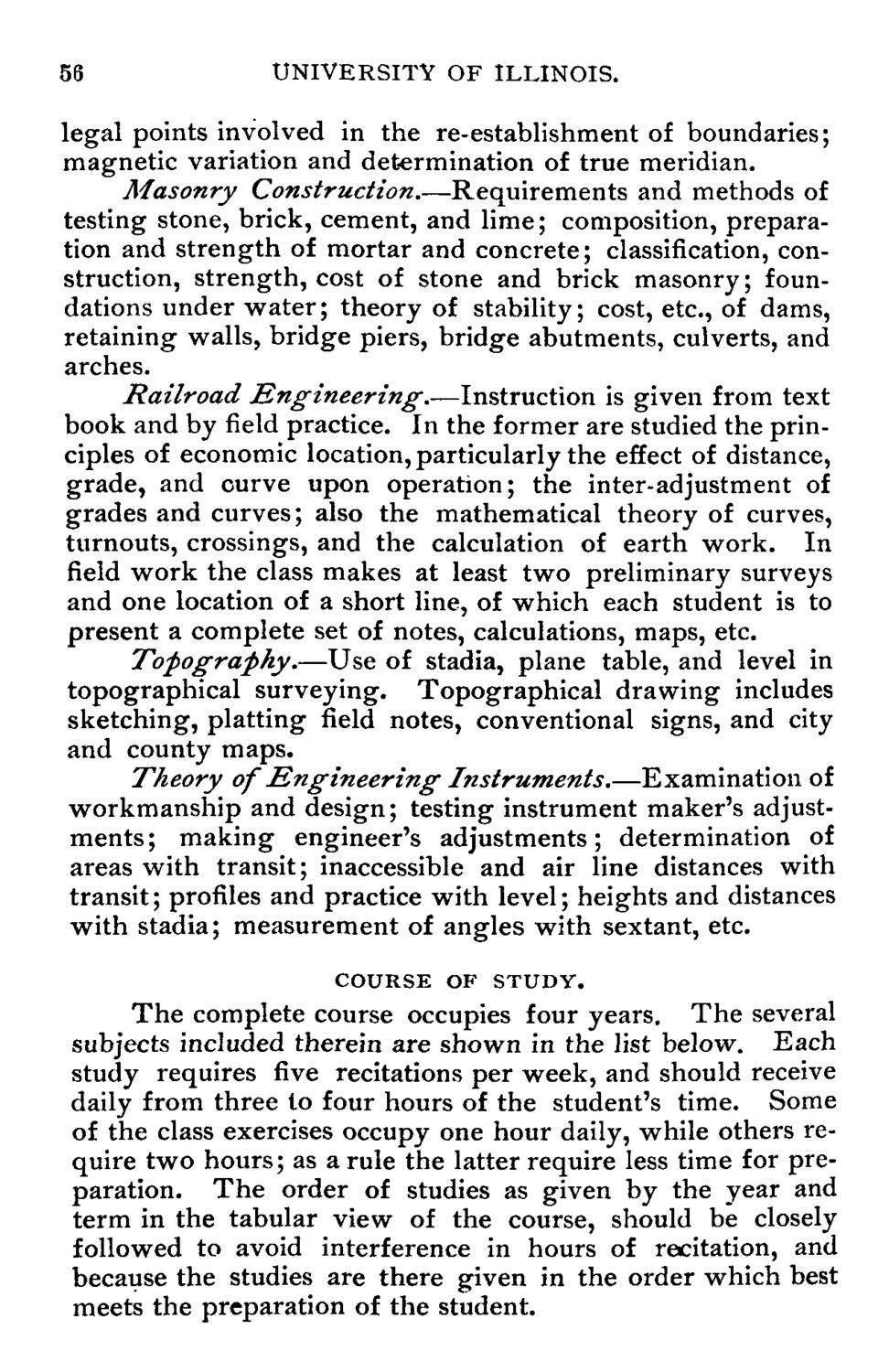| |
| |
Caption: Course Catalog - 1889-1890
This is a reduced-resolution page image for fast online browsing.

EXTRACTED TEXT FROM PAGE:
56 UNIVERSITY OF ILLINOIS. legal points involved in the re-establishment of boundaries; magnetic variation and determination of true meridian. Masonry Construction.—Requirements and methods of testing stone, brick, cement, and lime; composition, preparation and strength of mortar and concrete; classification, construction, strength, cost of stone and brick masonry; foundations under water; theory of stability; cost, etc., of dams, retaining walls, bridge piers, bridge abutments, culverts, and arches. Railroad Engineering.—Instruction is given from text book and by field practice. In the former are studied the principles of economic location, particularly the effect of distance, grade, and curve upon operation; the inter-adjustment of grades and curves; also the mathematical theory of curves, turnouts, crossings, and the calculation of earth work. In field work the class makes at least two preliminary surveys and one location of a short line, of which each student is to present a complete set of notes, calculations, maps, etc. Topography.—Use of stadia, plane table, and level in topographical surveying. Topographical drawing includes sketching, platting field notes, conventional signs, and city and county maps. Theory of Engineering Instruments.—Examination of workmanship and design; testing instrument maker's adjustments; making engineer's adjustments; determination of areas with transit; inaccessible and air line distances with transit; profiles and practice with level; heights and distances with stadia; measurement of angles with sextant, etc. COURSE OF STUDY. The complete course occupies four years. The several subjects included therein are shown in the list below. Each study requires five recitations per week, and should receive daily from three to four hours of the student's time. Some of the class exercises occupy one hour daily, while others require two hours; as a rule the latter require less time for preparation. The order of studies as given by the year and term in the tabular view of the course, should be closely followed to avoid interference in hours of recitation, and because the studies are there given in the order which best meets the preparation of the student.
| |